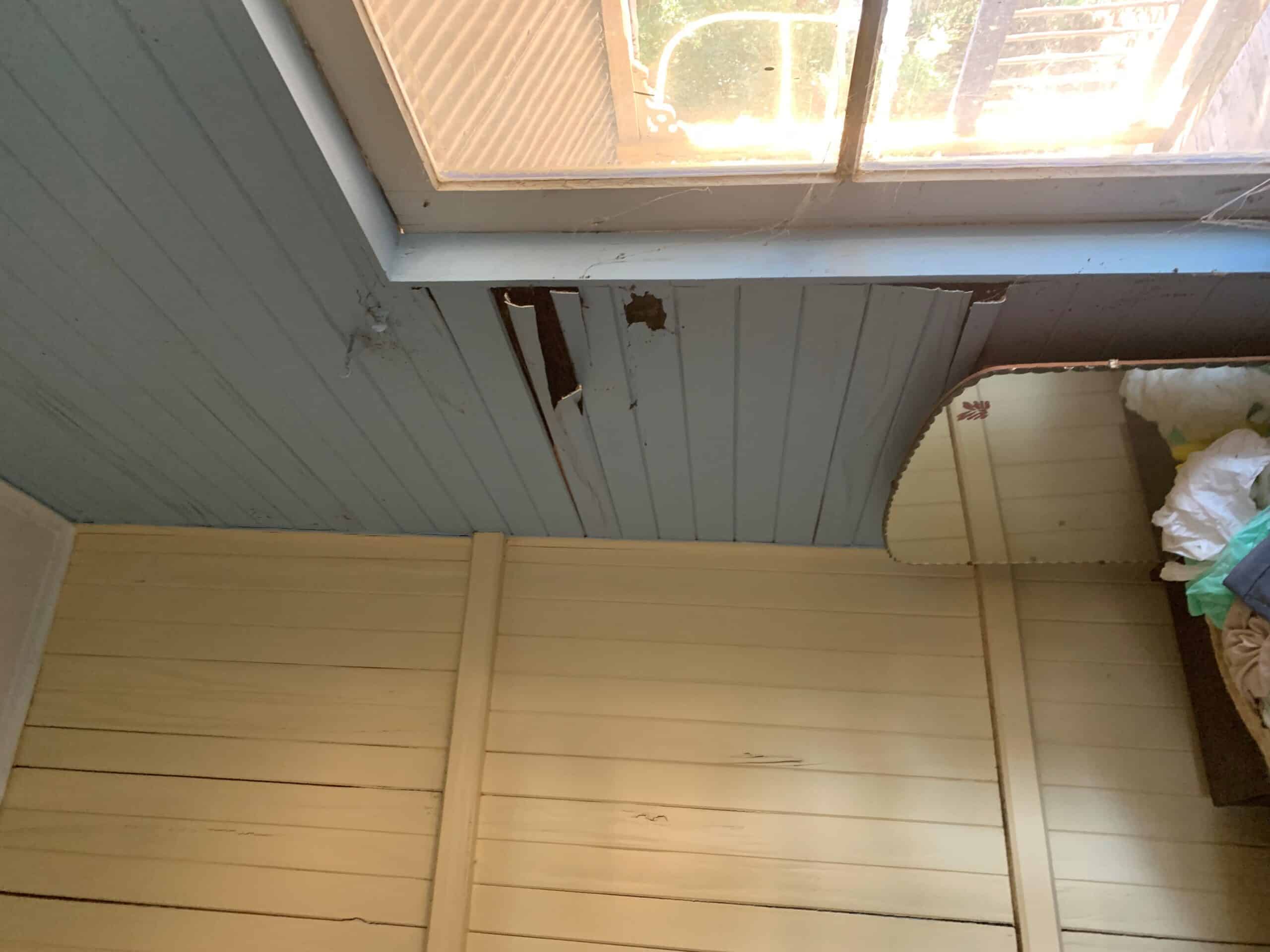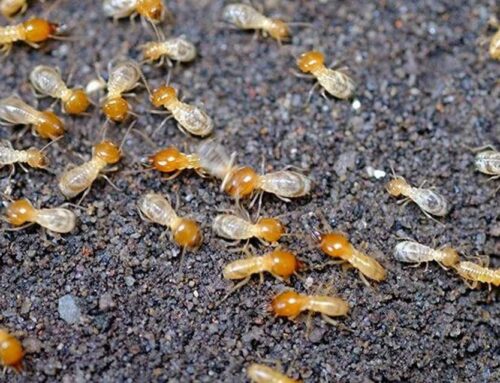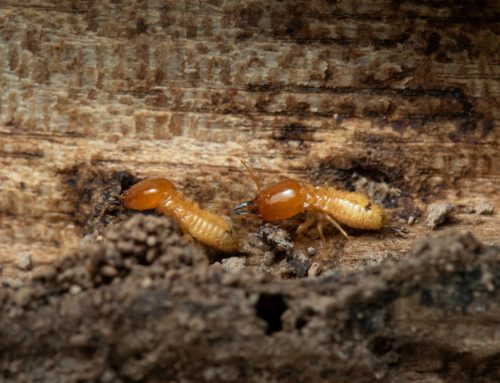Termites cause more destruction to Aussie homes and families than any other pests by a huge margin.
With an average of $7,000+ in structural repairs after an infestation, you can save yourself a lot of money and stress by paying heed to some basic elements.
Like practically all things, the damage is preventable as long as you catch it in the early stages and take some basic precautions.
Top Signs of Termites In or Around Your Home
When it comes to control and prevention, the best course is always to turn to a professional service. They will be able to detect signs that the untrained eye of a homeowner might skip over. But if you are suspicious that something is amiss or keen to be extra vigilant, it can help to know the indicators. The following are the most significant signs to be on guard for.
#1 – Mud tubes
In order to survive, these pests need warmth, shelter, and protection from other insects. They achieve this by building mud tubes, sometimes called shelter tubes. The tubes are actually built from the excrement. You’ll see these on walls or joists in your home. The size of these tubes is a strong indication of the level of infestation.
If it’s less than 15mm in diameter, then it’s just beginning, perhaps exploring the home for a food supply. But if the tubes are bigger than 40mm in diameter, it means you’ve got a problem. It’s a regular road for both workers and soldiers, and it’s been there a while.
Subterranean species, the most damaging kind, will need these tubes. These tubes are the most direct sign of an infestation. If you have either a small or large mud tube, it’s time to call in professional pest control services. A colony is nearby that needs to be removed, and the these pests are already inside your home.
#2 – Noticeable damage
They are very destructive pests, and they do cause quite a lot of damage. Unfortunately, by the time you spot this damage, it means that your home is already structurally compromised, to a greater or lesser degree. You might notice damage to skirting boards, laminated woods, structural beams, furniture, windows, or door frames, for example.
A good way to check is to knock on certain wooden items. If it sounds hollow, it’s because these insects may have eaten away at it. They destroy wood from the inside while the outer layer protects them from predators.
You might also notice blisters or dents in wooden products. When these pests eat the wood, it can warp and the outer layers will bend, blister, crack, and strain. Actually, the honeycombing or bubbling effect on painted items is a dead giveaway of the infestation.
These pests may also construct packing, especially near load bearing beams and joists. This resembles patches of clay and can easily be mistaken for some kind of plaster or construction feature.
#3 – Winged termites
You may not have been aware, but these insects can actually grow and shed wings when the circumstances arise. These winged insects are known as alates but are commonly called swarmers. This happens when a nearby colony is looking to fly to another location. The workers grow wings and shed them when they have reached the new home.
You might notice these wings scattered on the floor. Alternatively, you might see a lot of the winged species trapped in spider webs. Subterranean species will begin to fly or swarm when the conditions are warm in the summertime. This can also only happen when these insects are three years old, in the case of subterranean species.
The swarming age is different depending on the species in question, but the conditions must be warm for it to happen. The flying species will often be found near rotting wood outside where they reproduce.
#4 – Tapping or clicking noises
You can actually hear termites but not so much when they are eating, however. In the event of danger, the soldiers will bang their heads against the wood to warn the rest of the colony. So you’re likely hearing thousands of insects banging their heads against the wood. The workers, the ones actually destroying the wood, are more difficult to hear. You might still be able to hear them if you put your head to the wood and listen intently.
These insects are sensitive to sound vibrations, which is how the workers detect the vibrations when the soldiers bang their heads against the wood. It has been demonstrated that if you turn on rock music, these insects will eat twice as fast. The message is to listen for them and keep your ears alert.
#5 – Moisture
Moisture in the home is always an ominous sign. It practically always leads to structural damage if it is left unchecked as it rots wood and rusts many unprotected metals. Moreover, it can attract a great variety of pests including rodents, termites, fleas, silverfish, cockroaches, and other unwanted guests. Food and moisture are the two primary ingredients for any pest infestation.
When these insects are eating or tunnelling through a structure, they create moisture. This moisture is essential for the formation of the tunnel. It might be visible if it results in discolouration of some kind. But it will most likely be revealed in warped wood. If you notice that a window or door is hard to open or close, it could easily be due to moisture as a result of an infestation.
How can I prevent termites before they enter my home?
Where possible, you will want to prevent these insects before they have actually gained entry to the home. Once they are in, you need to call in professional services, treat the termites, and then find a long-term remedy to keep them at bay. Doing this first before they invade is the best way to protect your home and your bank balance.
You will have to get a barrier of some kind. The best kinds of prevention will be either a chemical barrier, a chemical reticulation barrier, or a physical barrier system (though the physical barrier is often used in conjunction with the chemical barriers).
You might pay between $1,500 – 4,000 for the barrier. While this is expensive, it is far more affordable than paying for the damage and then having to install the barriers anyway. Aside from this, there are many things you can do to prevent them in the first place. These include:
- Not stacking wood up against the wall
- Conducting an annual inspection
- Blocking off all penetration points with membranes, foams, and sealants
- Designing the home and extensions in line with prevention standards/codes
- Reducing all soil to wood contact around the home
- Keep plants away from the home
- Remove all dead and rotting trees away from the home
- Keep moisture away from the foundations
What attracts termites into my home?
There are certain items that attract these pests into your home. The first, quite obviously, is wood. The types of wood that these pests like to feed on includes:
- Pine
- Meranti
- Eucalypts
- Other softwoods
- Other hardwoods
And don’t forget that even if you have a steel frame home, your door and window frames, and plasterboard will still attract these pests.
But, aside from the exception of the drywood species, what they are really attracted to is moisture. An underground ventilation system could be an excellent way to keep out subterranean species but this is only possible with homes that are on stumps. Basically you should seek to keep moisture away from your home in all its formats.
Clean your gutters regularly, don’t have the sprinkler system too near the home, and keep all sorts of decaying plant matter far from your property. In addition, don’t use wooden borders to landscape your gardens and don’t put vines around your home.
How do I kill termites that I find in my home?
Well done if you’ve been on the lookout and found these insects in the home. Unfortunately, trying to tackle the problem by yourself is simply not a good idea.
First, you might identify the wrong species and thus apply a completely ineffective solution. The termites will be munching away in the meantime. The DIY chemical solution may also be potentially toxic with harmful side effects for pets and family members.
There are many DIY remedies, and they might be somewhat effective. But the fact is that you could be dealing with a colony of hundreds or thousands insects. They can grow wings and are constantly reproducing. You need to get professional services to eradicate them once and for all. And once eradicated, you need a solution in place that will prevent them from coming back again, in the format of a chemical or physical barrier.
There are many options available to eradicate pest problems. These options might include monitoring and baiting stations that use minimal chemicals, but still achieve eradication of the nests.
Who should I contact if I find evidence of an infestation?
You should get in touch with King Arthur Pest Control Services.
We have been in business for over 30 years, applying effective solutions to pest problems and other pest control issues. We also offer a 100% customer satisfaction guarantee and specialise in many kinds of treatment. We can discuss with you the best solution that suits your circumstances.
With an estimated 30% infestation rate in Queensland, we are fully aware of the issues at hand and how to deal with them. Your termites will be toast before they know it.
Call now for a fast and free quote on 0417 739 897.



